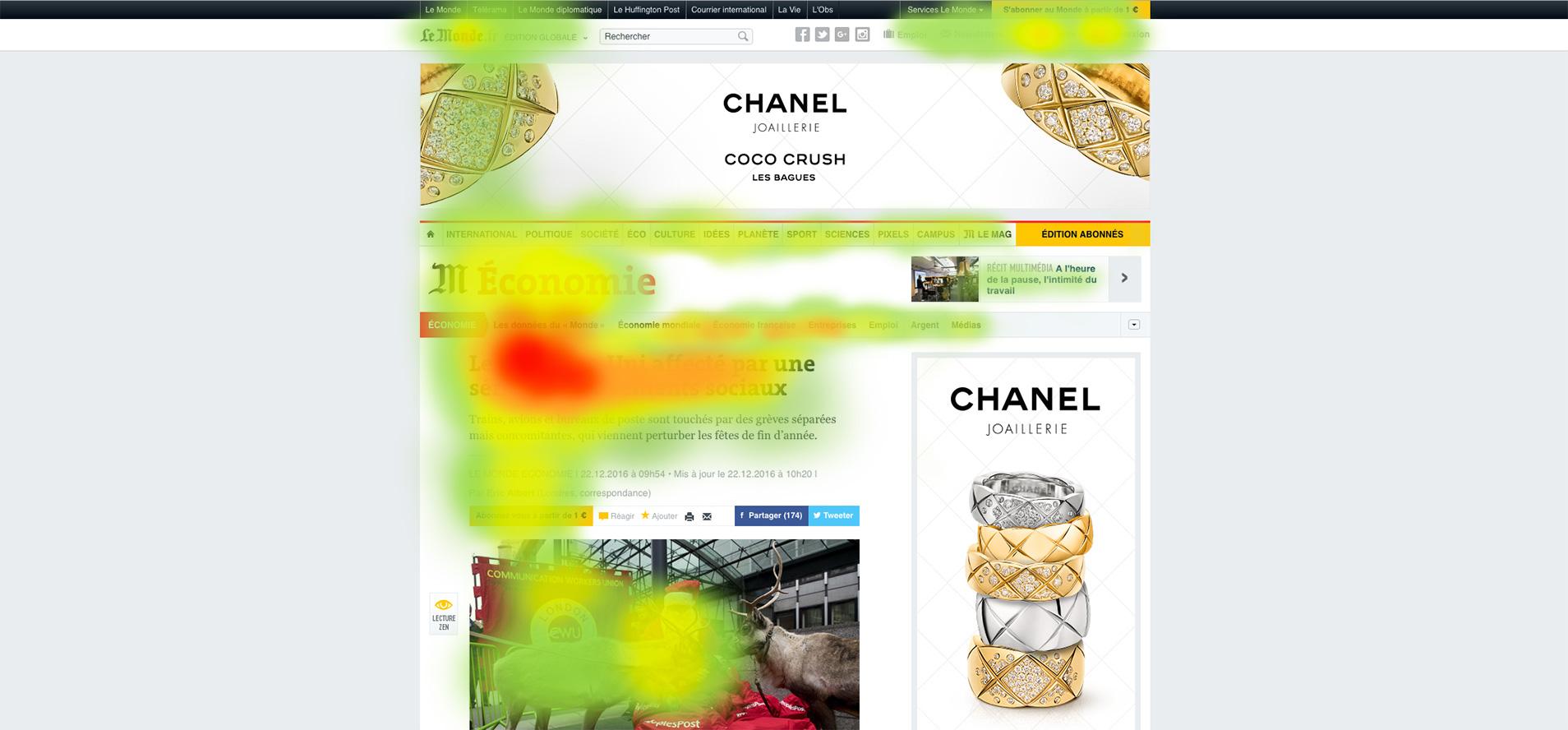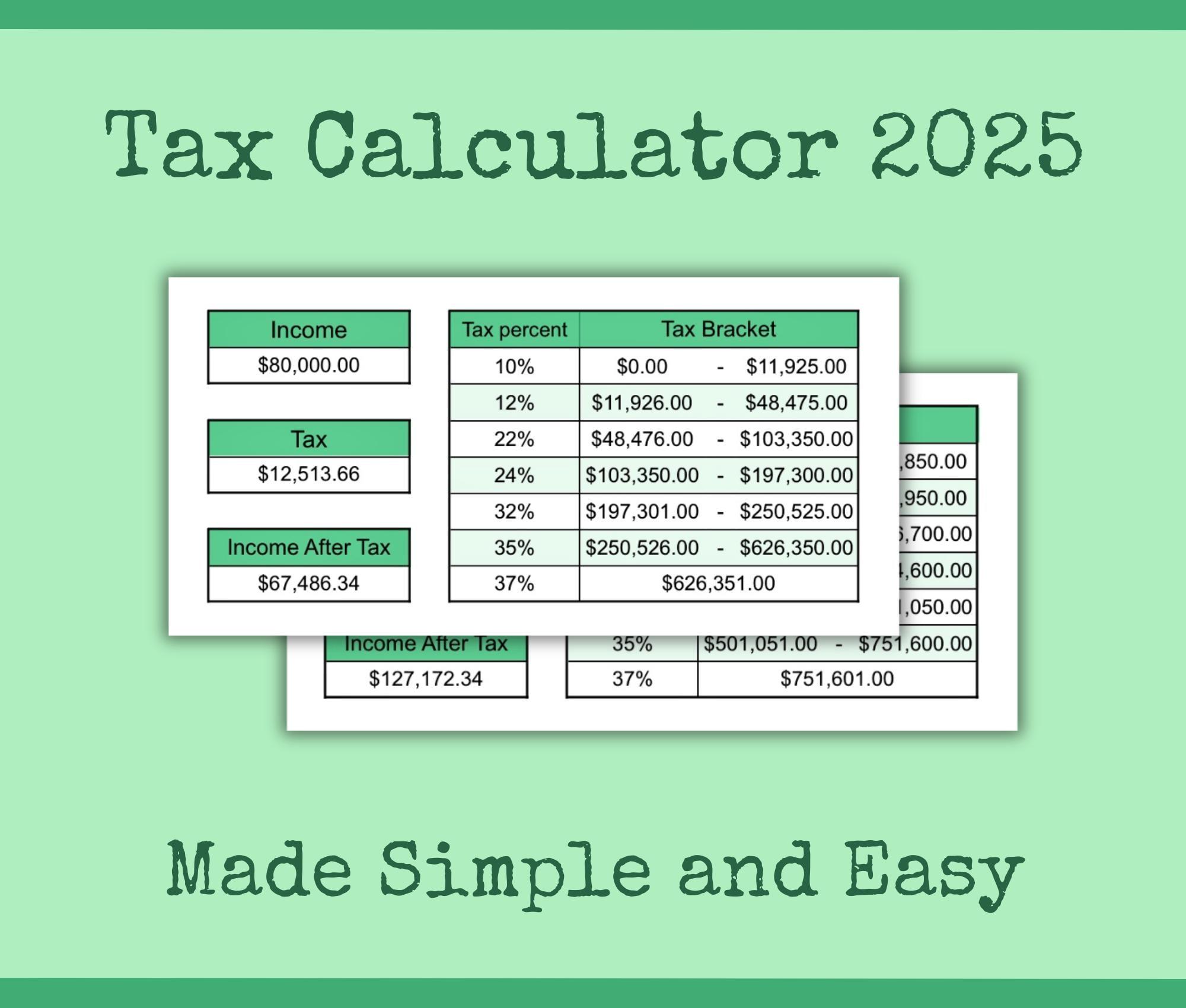in today’s fast-paced digital world, our screens are flooded with details—notifications, ads, and banners vying for our attention at every turn. But have you ever noticed how easily you can scroll right past those flashy banners without a second thought? Welcome to the phenomenon known as banner blindness. It’s not just a quirky term; it’s a psychological response that many of us experience as we navigate the endless sea of online content.In this article, we’ll dive into the psychology behind banner blindness, exploring why our brains seem to tune out these ads and what that means for marketers and consumers alike. More importantly, we’ll uncover effective strategies to overcome this challenge, ensuring that your messages cut through the noise and truly resonate. So, whether you’re a business owner looking to boost engagement or simply curious about how our minds work in the digital age, stick around—there’s a lot to discover!
Understanding Banner Blindness and Its Impact on User Engagement
Banner blindness is a fascinating phenomenon in the realm of digital marketing, where users consciously or unconsciously ignore content that resembles advertising. This habitual oversight can significantly affect user engagement and conversion rates. But what leads to this behavior? It all boils down to cognitive overload—individuals are bombarded with a plethora of information every day, causing them to tune out anything that seems promotional.
To grasp the impact of banner blindness on user engagement,consider the following factors:
- Visual Overload: With an abundance of colors,fonts,and images competing for attention,users frequently enough skim through content rather than engaging with it.
- Ad Fatigue: Repeated exposure to similar ads can led to desensitization, prompting users to ignore them altogether.
- Trust Issues: Users may have developed a skepticism towards online ads, associating them with intrusive marketing tactics.
Research indicates that banner blindness can reduce click-through rates (CTR) by as much as 50%. This statistic underscores the need for marketers to innovate their approaches. Creativity is key when designing banners that capture attention without being intrusive. by employing strategies such as:
- Clear Messaging: Use concise, straightforward language that resonates with your audience.
- Subtle Design: Ensure that your visuals integrate seamlessly with the surrounding content to avoid triggering the instinct to ignore.
- personalization: Tailor your ads to match user interests and behaviors, creating a sense of relevance that can’t be overlooked.
It’s also essential to test different placements and formats. Below is a short table highlighting various banner types and their potential effectiveness:
| Banner Type | Effectiveness |
|---|---|
| In-line Banners | higher CTR due to integration with content |
| Floating Banners | Can be effective but may annoy users |
| Sidebar banners | often ignored; lower engagement |
| Native Ads | Higher engagement as they blend with content |
Understanding the psychology behind user behavior is crucial for overcoming banner blindness.By crafting meaningful and engaging ads, you can not only grab attention but also foster a more enjoyable user experience. Adopting a user-centric approach will ultimately lead to increased engagement and better conversion rates. So, think outside the box and create banners that truly resonate with your audience!
The science of Attention: Why We Ignore Online Ads
The phenomenon of banner blindness is not just a quirky term; it’s a powerful reminder of how our brains filter information in the digital age. With the average internet user bombarded by thousands of ads each day, our cognitive systems have developed effective strategies to tune out distractions. The result? A critically important portion of online advertisements goes unnoticed, leading to frustrated marketers and a ubiquitous challenge across the web.
One major reason for this is the human brain’s inherent need to conserve energy. Cognitive overload occurs when we are presented with too many stimuli at once,prompting our minds to prioritize what’s truly necessary. This means that unless an ad stands out dramatically or resonates with a user’s current interests, it risks being categorized as mere clutter. Here are a few factors that contribute to this selective attention:
- Visual Noise: Ads that blend in with typical webpage design are frequently enough ignored.
- Repetition: Frequent exposure to the same ad can lead to desensitization.
- Irrelevance: Ads that don’t align with user interests are commonly dismissed.
- Ad Fatigue: Overexposure to ads can make users actively avoid them.
Moreover, the layout of a webpage plays a critical role in how ads are perceived. Users are now adept at recognizing patterns; they usually gravitate towards content areas that deliver value, such as articles, videos, or social media feeds. In contrast, they tend to view banner spaces—especially those at the top or sides of a website—as secondary. It’s no wonder that many marketers see lower click-through rates as users become increasingly savvy at ignoring conventional ad formats.
Understanding these psychological mechanisms opens the door for businesses to rethink their advertising strategies. To capture attention effectively,consider the following approaches:
- Native Advertising: Integrate ads seamlessly with content to make them less intrusive.
- Personalization: use data to tailor ads to individual preferences and behaviors.
- Interactive Content: Engage users through quizzes, polls, or gamified experiences.
- Visual Appeal: Invest in high-quality visuals that stand out and catch the eye.
To illustrate the effectiveness of these strategies, consider the following table showcasing the impact of various ad formats on user engagement:
| Ad Format | Engagement Rate (%) |
|---|---|
| Native Ads | 32% |
| Video Ads | 25% |
| Display Banners | 8% |
| Social Media Ads | 15% |
By leveraging these insights, brands have the potential to not only break through the noise but also foster meaningful connections with their audiences. In a world where attention is currency, it’s time for marketers to innovate and create ads that are not just seen—but truly noticed and valued.

Recognizing the Symptoms of Banner Blindness in Your Audience
Understanding and identifying the signs of banner blindness is crucial for any digital marketer aiming to capture their audience’s attention. This cognitive phenomenon occurs when users consciously or unconsciously ignore banner ads and other promotional content due to familiarity and saturation. Here are some key indicators to help you recognize this phenomenon in your audience:
- Low Click-Through Rates (CTR): If you notice a consistent drop in CTR for your banner ads, it may be a clear sign of banner blindness.This indicates users are overlooking or ignoring your calls to action.
- Ad Fatigue: When your audience becomes overly familiar with your ads, they may start to mentally tune them out.Look for patterns where specific ads that once performed well suddenly lose their effectiveness.
- Engagement Metrics: Decreased engagement on associated content, such as blog posts or videos linked to your banners, can also signal banner blindness. if users aren’t interacting with the content you promote,they may have developed a visual filter against your ads.
- User Feedback: Pay attention to comments or surveys that reveal how users feel about your ads. If users express annoyance or suggest they don’t even notice them, it’s a red flag.
To further exemplify this issue, consider the following table that highlights common symptoms associated with banner blindness:
| Symptoms | Potential Impact |
|---|---|
| Increased Scroll Depth | Users scrolling past banners without engaging. |
| Ad Block Usage | Growing number of users employing ad blockers. |
| High Bounce Rates | Users leaving your site quickly without interacting. |
| Negative brand Perception | Users associating your brand with intrusive ads. |
By recognizing these symptoms, you can take proactive steps to engage your audience more effectively. Consider experimenting with different formats, positioning, and messaging to help your ads stand out. Implementing more personalized content or interactive elements can also reignite interest and combat the effects of banner blindness.
Ultimately, the key is to remain observant and adaptable.Regularly analyze your metrics and seek user feedback to ensure your ads remain relevant and engaging. By doing so, you stand a better chance of capturing attention and driving conversions in an increasingly ad-saturated habitat.
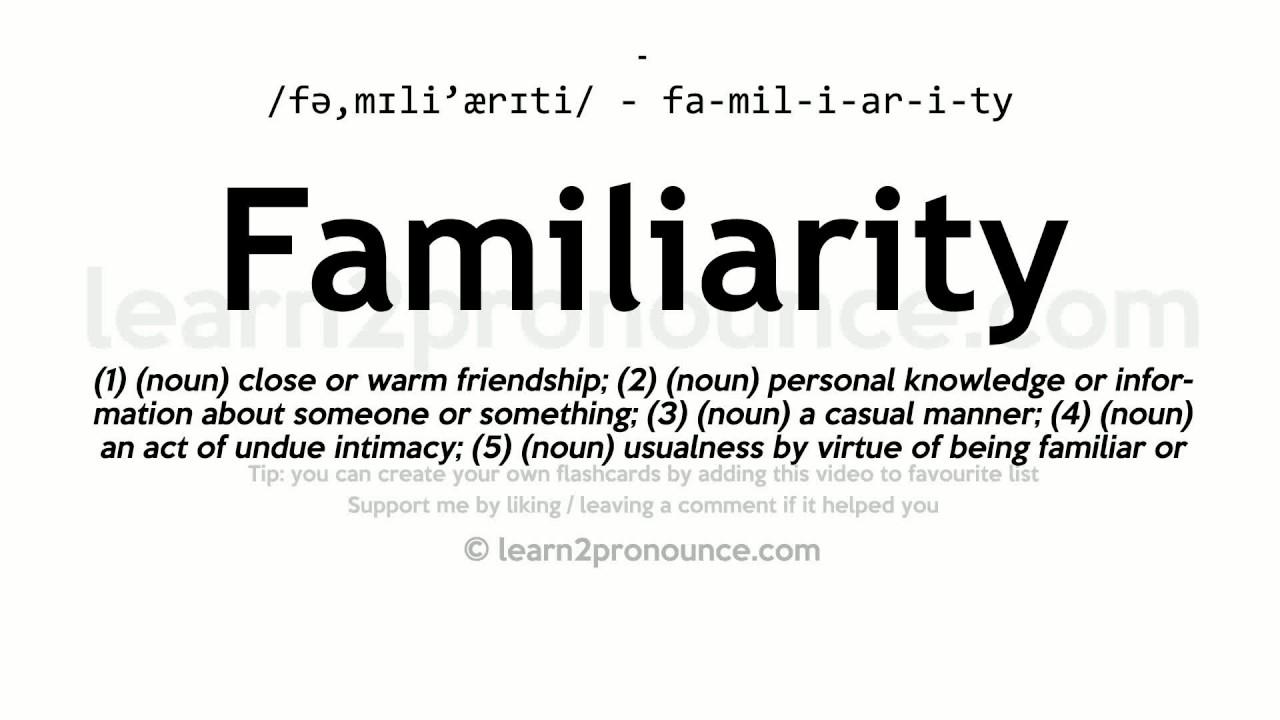
The Role of Familiarity: How Repetition Shapes Our Perceptions
Familiarity breeds comfort, and in the digital realm, this principle plays a crucial role in how we engage with content. When users encounter similar elements repeatedly—be it banner ads, navigation menus, or call-to-action buttons—they often develop a sense of predictability. This can lead to a phenomenon commonly known as banner blindness, where users unconsciously ignore repetitive elements because they become too familiar. The more we see something, the less likely we are to notice it.
Consider this: our brains are wired to seek efficiency. when we recognize a pattern, we no longer need to actively process it.Instead, we shift our focus to new, novel stimuli. This is why a user might scroll past a banner ad they’ve seen multiple times without even realizing it. The initial impact of the ad may have been strong, but over time, its effectiveness diminishes as it becomes part of the background noise of our browsing experience.
To combat this natural tendency, brands need to innovate continuously. Here are some strategies to keep users engaged:
- vary Your Visuals: Regularly update the design, color schemes, and imagery of your banners to keep them fresh and eye-catching.
- Personalize Content: Use data analytics to tailor messages to individual users based on their preferences and browsing history.
- Engage with Interactivity: Incorporate interactive elements, such as quizzes or polls, to invite users to engage rather than passively observe.
Understanding the psychology behind familiarity also allows brands to make strategic decisions about placement and frequency. For instance, a well-placed ad that users see just a few times might perform better than one they see constantly in their peripheral vision. This balance is vital in ensuring that your advertising remains impactful without overwhelming your audience.
Moreover,testing different approaches can yield valuable insights.A/B testing different versions of your banners can help identify what resonates best with your audience. Consider tracking the following metrics:
| Metric | Importance |
|---|---|
| Click-Through Rate (CTR) | Measures engagement with your ad. |
| Conversion Rate | Indicates the effectiveness in driving actions. |
| return on Ad Spend (ROAS) | Evaluates the profitability of your campaigns. |
By embracing creativity and leveraging data-driven insights, brands can break the cycle of familiarity and reinvigorate their connections with audiences. It’s not just about being seen; it’s about being remembered and creating a lasting impact. In a world saturated with information, standing out is not just a strategy; it’s a necessity.
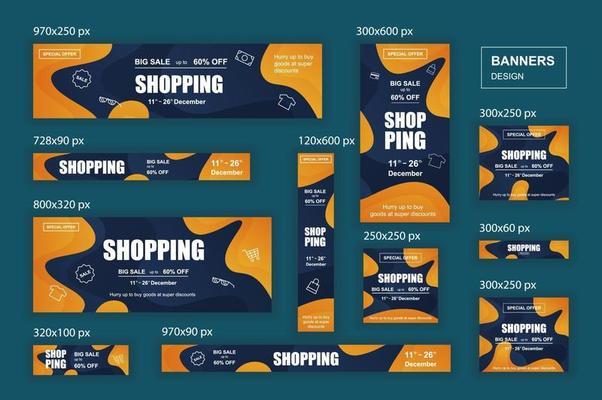
Crafting Compelling Visuals: What Makes Banner Ads Stand Out
When it comes to capturing attention in an oversaturated digital landscape, the design of your banner ads plays a pivotal role. To break through the phenomenon known as banner blindness, you must craft visuals that not only attract the eye but also engage the viewer’s mind. Here are some key elements that can make your banner ads truly stand out:
- Bold Colors: utilizing contrasting colors can create a sense of urgency and draw the eye.Consider using colors that align with your brand but also set you apart from the surrounding content.
- Clear Messaging: Your message should be concise and to the point. Incorporate powerful verbs and emotional triggers that resonate with your audience, encouraging them to take action.
- Visual Hierarchy: Organizing elements in a way that guides the viewer’s eye can make a significant difference. Use size and placement strategically—make the call-to-action (CTA) prominent and ensure that it stands out from other elements.
- High-Quality Images: Invest in striking visuals that capture attention. Whether it’s a stunning photograph or a well-designed graphic, high-quality imagery can elevate your banner ad’s perceived credibility.
- Brand Consistency: Maintain a consistent style that aligns with your overall branding. This helps in building familiarity and trust with your audience, making them more likely to engage.
Furthermore, it’s essential to consider the psychological aspects of how people interact with ads. Research indicates that users often scan pages in an F-pattern, meaning that the top and left portions of a banner are prime real estate for your most significant information. By understanding these patterns,you can strategically place your key messages where they are most likely to be noticed.
To further enhance engagement, consider using animation or interactive elements. Subtle movements can catch the eye without overwhelming the viewer, while interactive features invite them to participate rather than passively glance. It’s all about creating an experience that feels natural and inviting.
| Element | Impact |
|---|---|
| Color Contrast | Increases visibility and urgency |
| Clear CTA | Drives click-through rates |
| High-Quality Images | Boosts credibility and appeal |
| Animation | Enhances engagement without distraction |
By embracing these concepts, your banner ads can bypass the blind spots of your audience and communicate effectively. Remember, the goal is not just to be seen but to be remembered, creating a lasting impression that encourages action. Invest time in refining your visuals, and watch them transform into powerful tools for your marketing strategy.
Tactics to Enhance User Experience and Reduce Banner Blindness
To combat banner blindness, it’s essential to employ innovative tactics that not only engage users but also create a memorable experience. The key lies in understanding user behavior and preferences while ensuring your content stands out without being intrusive.
Leverage Eye-Catching Design: A visually appealing banner can capture attention effectively. Utilize bold colors and high-quality images that resonate with your brand identity. Consider the following design elements:
- Contrast: Use contrasting colors to ensure your banner pops against the rest of the page.
- Whitespace: Avoid clutter; ample whitespace helps your content breathe.
- Animation: Subtle animations can draw the eye, but be careful not to overdo it.
Personalize User Experience: Tailoring content to user preferences can significantly enhance engagement. Use data analytics to understand visitor habits and create personalized banners that address their needs. This could include:
- Location-Based Offers: Customize promotions based on the user’s geographical location.
- Behavioral targeting: Show banners related to users’ previous interactions with your site.
- Dynamic Content: incorporate real-time data that can change according to user behavior.
Optimize Placement and Timing: Where and when your banner appears can make a world of difference. Consider these strategic placements:
- Above the Fold: Position key banners where they are visible without scrolling.
- exit Intent: Capture users just as they are about to leave the site with a compelling offer.
- End of Content: Place banners at the conclusion of articles, when users are more inclined to consider additional offerings.
Utilize Clear Calls to Action (CTAs): A well-crafted CTA can make all the difference. Ensure that your CTAs are:
- Action-Oriented: Use strong verbs that encourage immediate action, such as “Get Started” or “Join now.”
- Visibly Distinct: Make your buttons stand out with color and size without overwhelming the design.
- Simple and Direct: Avoid jargon; make it easy for users to understand what they gain by clicking.
Test and Iterate: Continuous improvement is vital in reducing banner blindness. Regularly conduct A/B testing to evaluate different designs, placements, and messages. Gather data on:
| Test Element | Version A | Version B | Winner |
|---|---|---|---|
| Color Scheme | Red | Green | Green |
| CTA Text | Sign Up | Join Us | Join Us |
| Banner Placement | Top | Bottom | Top |
By implementing these tactics, you can create a more engaging experience that not only draws users in but also encourages them to interact with your content. Remember, the goal is to create a seamless experience that resonates with your audience and keeps them coming back for more.
Personalization Strategies to Capture audience Interest
In a world inundated with digital advertisements, capturing audience interest requires a strategic approach rooted in personalization. Understanding your audience’s preferences and behaviors can significantly enhance the effectiveness of your messaging.
First and foremost, segment your audience. This means dividing your audience into smaller groups based on shared characteristics such as demographics, purchasing behavior, or interests. By tailoring your content to these segments, you can create a more engaging experience. Such as, you might consider:
- Demographic Segmentation: Age, gender, location
- Behavioral Segmentation: Purchase history, browsing behavior
- Psychographic Segmentation: Interests, values, lifestyle
Another powerful strategy is to leverage dynamic content on your banners. dynamic content allows you to display different messages or visuals based on user behavior or preferences. This could mean showing a user-specific product proposal based on previous purchases or even adjusting your ad’s tone to match the user’s browsing context.By doing so, you create a sense of relevance that can compel users to engage rather than scroll past.
Additionally,consider the role of timing in your personalization efforts. Research indicates that the effectiveness of ads can be significantly influenced by when they are displayed.Use data analytics to determine which times your audience is most active and likely to engage with your content. For instance:
| Time of Day | Engagement Type | recommended strategy |
|---|---|---|
| Morning | Informative Content | Offer tips or news updates |
| Afternoon | Promotional Offers | Highlight sales or discounts |
| Evening | Entertainment | Use engaging videos or interactive content |
Moreover, a personalized call-to-action (CTA) can make all the difference. Instead of generic phrases like “Click Here,” tailor your CTAs based on user insights. use language that reflects their interests or previous interactions with your brand. Such as, a CTA like “Grab Your Favorite Sneakers Now!” feels far more engaging than a standard “Shop now.”
don’t forget to test and optimize your strategies regularly. Utilize A/B testing to evaluate the performance of personalized banners versus non-personalized ones. Analyzing metrics such as click-through rates and conversion rates will help you refine your approach and enhance your audience’s experience over time.
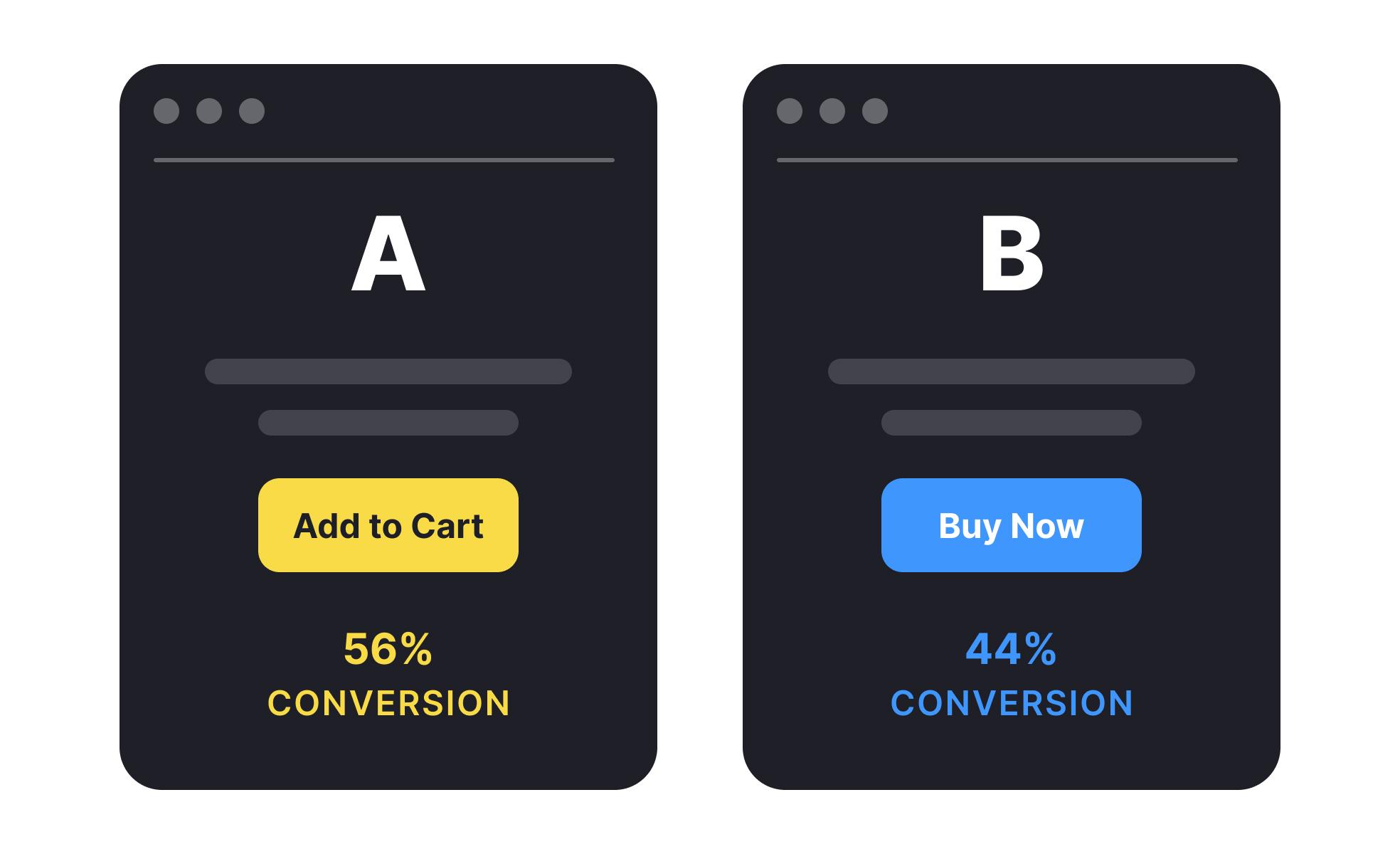
Testing and Analyzing Effectiveness: The Importance of A/B Testing
When it comes to web design and advertising, assumptions can lead to missed opportunities. That’s where A/B testing comes into play. By comparing two versions of a webpage or ad, you can determine which one resonates more with your audience. This data-driven approach is essential in overcoming banner blindness, as it allows you to refine your strategies based on real user behavior.
Imagine you have two different banner ads. One is radiant and flashy, while the other is minimalistic and straightforward. Through A/B testing, you can analyze metrics such as click-through rates, bounce rates, and conversion rates.This not only helps you understand which design captures attention but also provides insight into user preferences. By focusing on metrics like these, you gain a clearer picture of what engages your audience.
Here are a few key factors to consider when conducting A/B tests:
- Sample Size: Ensure you have enough participants to make your results statistically significant.
- Variable isolation: Test one element at a time,whether it’s color,text,or placement,to understand its impact.
- Duration: Run your test for an adequate period to account for variations in user behavior over time.
- Goal Definition: Clearly define what success looks like before starting your test, whether it’s increased clicks or higher sales conversions.
After running your tests, analyze the results meticulously. A simple comparison table can help visualize the differences in performance between your variants. For instance, consider the following:
| Ad Version | Click-Through Rate (%) | Conversion Rate (%) |
|---|---|---|
| Bright and Flashy | 2.5 | 1.2 |
| Minimalistic | 4.0 | 2.5 |
This example clearly shows that the minimalistic ad outperformed the bright one in both click-through and conversion rates. Such insights enable you to make informed decisions, guiding your design choices and marketing strategies to effectively combat banner blindness.
Ultimately, testing is about more than just numbers; it’s about understanding your audience on a deeper level. The insights gained from A/B testing can inform not just your banner designs, but your overall user experience, leading to stronger engagement and conversions. So, don’t shy away from experimenting—embrace the data and let it drive your decisions!

leveraging Context and Relevance in Banner Design
When it comes to banner design, context and relevance are your best allies in breaking through the clutter. in a digital landscape overflowing with information, understanding your audience’s mindset is crucial. If your banner fails to resonate with the viewer’s current context—be it their online behavior, interests, or even the time of day—they’re likely to give it a passing glance, if they notice it at all.
To effectively leverage context, consider these key elements:
- Target audience: Know who you are speaking to. Tailor your messaging to specific demographics, interests, and pain points.
- Timing: Align your banners with relevant events, seasons, or trends. A timely banner can engage viewers in ways that generic ads cannot.
- Placement: Position your banners in spaces where they are most likely to be noticed. This could be next to related content or in high-traffic areas of a website.
Relevance ties closely with context and focuses on making your message meaningful to the viewer.A banner that speaks directly to a viewer’s current needs is far more likely to cut through the noise. To enhance relevance, consider:
- Personalization: Use data-driven insights to customize your banners. Addressing viewers by name or referencing their past interactions with your brand can create a more engaging experience.
- Visual Appeal: Use eye-catching designs that reflect the interests of your target audience. Simple yet impactful graphics can draw attention while clearly communicating the message.
- Clear Call-to-action: Make your call-to-action (CTA) as relevant as possible. Rather of generic “Click Here” prompts, use specific phrases that align with the viewer’s needs, like “Shop the Latest Trends” or “Get Your Free Guide Now.”
By integrating context and relevance into your banner design, you not only increase the chances of engagement but also cultivate a deeper connection with your audience. The goal is to turn the fleeting glance into a meaningful interaction, and it all starts with understanding what your audience craves.
| Element | Importance |
|---|---|
| Target Audience | ensures your message resonates |
| Timing | Increases engagement during relevant moments |
| Placement | increases visibility and click-through rates |
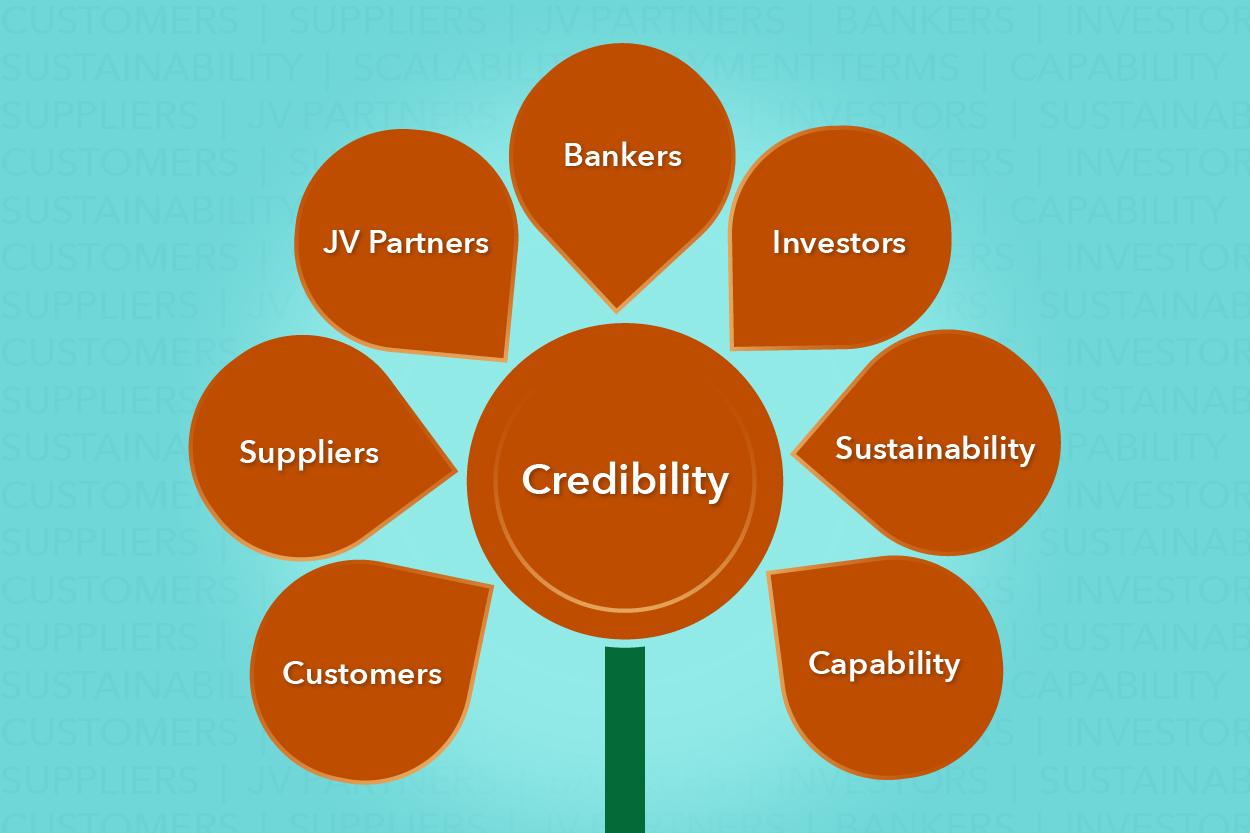
Building Trust: How Brand Credibility Affects Ad Perception
In the digital landscape, where ad saturation is a common challenge, the credibility of a brand plays a pivotal role in how consumers perceive advertisements. Consumers are naturally skeptical, and when they encounter advertisements, they often gauge their trustworthiness based on the reputation of the brand behind them. Brand credibility can significantly influence whether a potential customer engages with an ad or simply scrolls past it.
Research indicates that consumers are more likely to pay attention to ads from brands they know and trust. This psychological tendency is grounded in the fact that people often seek reassurance in their purchasing decisions. A brand that has established a solid reputation can effectively cut through the noise of banner ads and command attention. Consider these factors that contribute to building brand credibility:
- Consistency: Brands that maintain a consistent message across all platforms build familiarity and trust.
- Transparency: Honesty in marketing practices and clear dialog fosters a positive perception.
- Engagement: Actively engaging with customers and addressing their concerns enhances credibility.
When a brand successfully cultivates these elements, it not only reduces the prevalence of banner blindness but also enhances ad effectiveness.Take a look at how different levels of brand credibility can affect ad perception:
| Brand Credibility Level | Ad Perception | Engagement Rate |
|---|---|---|
| High | Positive Attitude | Above 25% |
| Moderate | Neutral response | 10-25% |
| low | Negative reaction | Below 10% |
This table clearly illustrates that as brand credibility increases, so does the likelihood of a positive ad perception and higher engagement rates. This means that brands need to focus not just on creating flashy ads but on building a trustworthy image that resonates with their audience.
Moreover, the integration of social proof can enhance brand credibility significantly. Customer reviews, testimonials, and case studies serve as a powerful endorsement in a consumer’s decision-making process. When potential customers see others vouching for a brand, their skepticism diminishes, making them more receptive to advertisements. It’s a classic psychological principle: if others trust a brand, why shouldn’t they?
Ultimately, overcoming banner blindness is not solely about redesigning ad formats or improving placement; it’s about fostering a credible brand presence that invites trust. As brands strive to establish themselves as reliable sources, they pave the way for consumers to engage meaningfully with their ads, transforming passive viewers into active participants in their marketing journey.
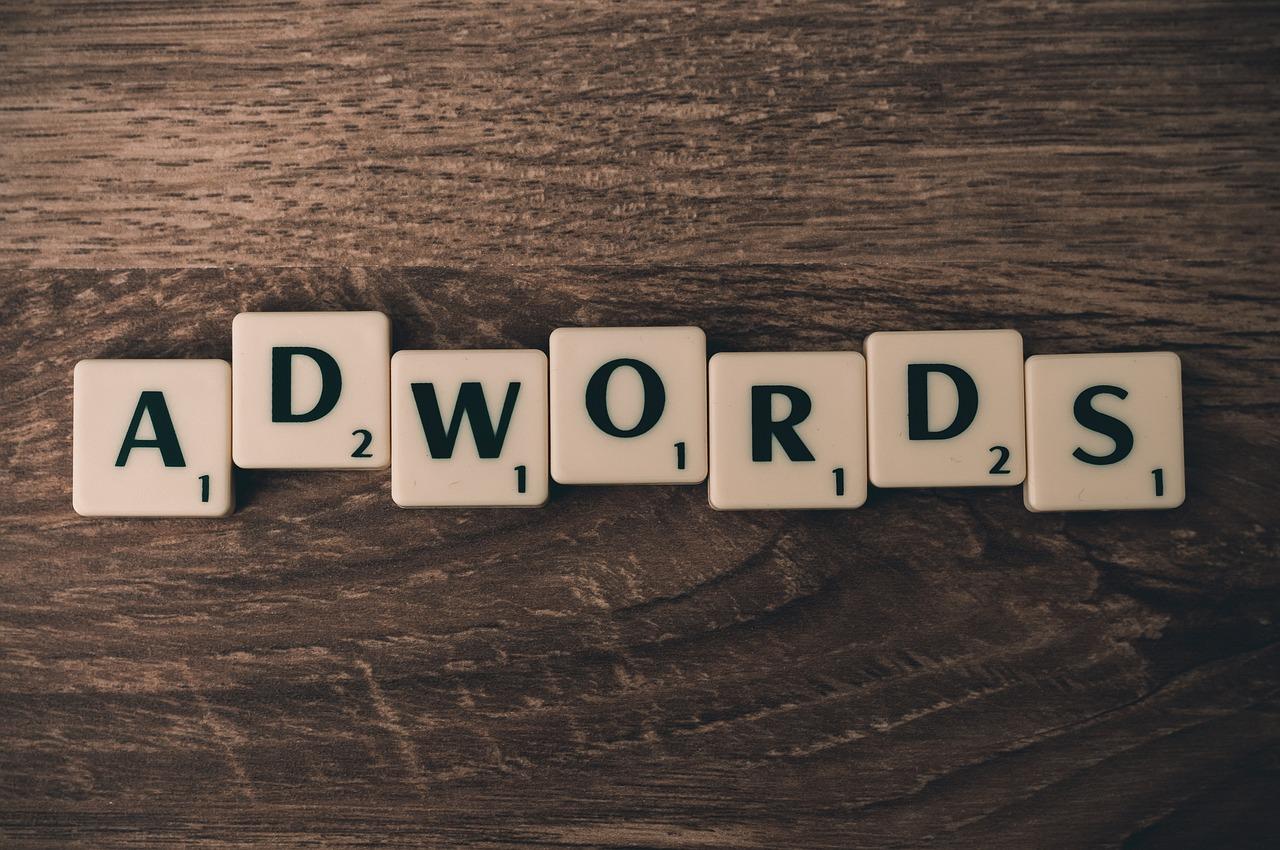
Creating a Seamless Flow Between Content and Advertising
In today’s digital landscape, blending content with advertising is not just a strategy; it’s a necessity. When done correctly, it not only enhances user experience but also boosts engagement and conversion rates. the key is to create a narrative that seamlessly weaves promotional elements into the fabric of your content, making them feel like a natural extension rather than a distraction.
One effective approach is to leverage native advertising, which aligns brand messages with the overall content theme. By doing so, advertisers can foster a sense of trust and authenticity. Consider these strategies to enhance the natural flow:
- Storytelling: Use relatable stories that resonate with your audience. This makes the promotional content feel organic and engaging.
- Visual Harmony: Ensure that the design of your ads blends well with the surrounding content. This includes using similar color palettes and typography.
- Relevant Context: Place ads in contexts where they add value,such as product recommendations in how-to guides or expert tips within informative articles.
Furthermore, employing contextual targeting can significantly enhance the effectiveness of your advertising. By serving ads that are relevant to the current content a user is engaging with, you create a more personalized experience.For example, if someone is reading an article about healthy eating, ads featuring organic snacks or meal prep services are more likely to capture attention.
To illustrate the importance of relevance, here’s a speedy comparison:
| Ad Context | Engagement Potential |
|---|---|
| Generic Ads | Low |
| Targeted ads in Relevant Content | High |
Another crucial component is the call-to-action (CTA). When integrating ads, it’s vital to craft CTAs that are compelling yet unobtrusive. Instead of the typical “Buy Now,” consider phrases like “Discover More” or “Join the Conversation,” which invite users to engage without feeling pushed. Approach them as part of the content journey, guiding users naturally to the next step.
Ultimately, the goal is to create an experience where users feel enriched rather than interrupted. By thoughtfully combining content with advertising, you can not only combat banner blindness but also cultivate a loyal audience that appreciates and engages with your offerings. It’s about fostering a relationship where both content and promotion work hand in hand, leading to better outcomes for everyone involved.

Innovative Approaches to banner Advertising for Better Engagement
To tackle the issue of banner blindness, advertisers need to embrace innovative strategies that captivate the audience’s attention and encourage interaction. By understanding the psychology behind how users perceive advertisements, brands can craft campaigns that stand out amidst the clutter. Here are some effective approaches to enhance banner advertising:
- Personalization: Tailoring ads based on user behavior and preferences can significantly increase engagement. When users feel that ads are relevant to their interests, they are more likely to interact with them.
- Visual Storytelling: Incorporating narratives into banner ads can create an emotional connection. Using compelling imagery and succinct text can grab attention and convey the message quickly.
- Interactive Elements: Adding interactive features like quizzes, polls, or games encourages users to engage more deeply with the content. This not only draws attention but also fosters a sense of participation.
- Dynamic Content: utilizing dynamic ads that change based on user interactions or context can keep the content fresh and engaging, making it less likely for users to scroll past.
- A/B Testing: Continually testing different designs, messages, and placements helps identify what resonates best with the audience. this data-driven approach allows for ongoing optimization of banner campaigns.
One effective strategy is to incorporate color psychology into banner design. Different colors evoke different feelings and responses. As an example, using warm colors can create excitement, while cool colors can instill a sense of trust. This can influence how users perceive and engage with an ad.
| Color | Emotion | submission in Ads |
|---|---|---|
| Red | Excitement | Great for promotions |
| blue | Trust | Ideal for financial services |
| Green | Calmness | Effective for wellness products |
| Yellow | Optimism | Perfect for summer sales |
Another powerful method is to leverage user-generated content. Showcasing real customer stories,testimonials,or images in your banners can enhance authenticity and trustworthiness. Users are more inclined to engage with content that feels genuine and relatable.
never underestimate the power of simplicity. Cluttered banners can overwhelm viewers, leading to quick dismissals. Focus on clear, concise messaging paired with striking visuals. A minimalistic approach often leads to higher conversion rates as it directs attention to the main call-to-action.
Frequently Asked Questions (FAQ)
Q&A: The Psychology Behind Banner Blindness (and How to Overcome It)
Q1: What exactly is banner blindness, and why should we care about it?
A1: Banner blindness is a phenomenon where users consciously or unconsciously ignore banner-like information on websites and apps. In today’s digital age, where we are bombarded with ads, it’s crucial to understand banner blindness because it can significantly impact the effectiveness of online marketing campaigns. If users aren’t noticing your ads, you’re wasting time, effort, and money!
Q2: Why do people experience banner blindness?
A2: People experience banner blindness primarily due to cognitive overload. We are constantly inundated with information, and our brains are wired to filter out what we deem unimportant. Ads often blend in with the content,leading users to overlook them entirely. Additionally, if previous experiences with ads have been negative—like intrusive or irrelevant content—users develop a habit of ignoring them.
Q3: What can marketers do to combat banner blindness?
A3: Great question! Marketers can combat banner blindness by creating engaging, relevant content that stands out. Here are a few strategies:
- Use eye-catching designs: Play with colors, shapes, and images that draw attention.
- Test different placements: Don’t just stick to the traditional top or sidebar positions. Experiment with various locations on the webpage.
- Make it personal: Tailor your messaging to the interests and behaviors of your target audience.
- Focus on storytelling: Create a narrative that connects with users emotionally. If they feel something, they are more likely to engage.
Q4: Is there a psychological approach that can definitely help overcome banner blindness?
A4: Absolutely! Leveraging psychological principles can be incredibly effective. As a notable example, using the Zeigarnik Effect, which states that people remember unfinished tasks better than completed ones, can encourage clicks. Presenting ads that imply an incomplete user journey can motivate engagement. Additionally, social proof—like testimonials or user reviews—can make ads seem more trustworthy and appealing.Q5: Can you share some examples of brands that have successfully overcome banner blindness?
A5: Definitely! Brands like Airbnb and Spotify have mastered the art of engaging advertising. For instance, Airbnb often uses stunning visuals that capture the essence of travel, making their ads feel more like inspiration than just another promotion. Spotify, on the other hand, personalizes its ads based on user listening habits, making each ad feel tailored specifically for the listener, which leads to higher engagement rates.
Q6: What’s the takeaway for businesses trying to deal with banner blindness?
A6: the key takeaway is to prioritize user experience over mere visibility. Understand your audience, craft compelling narratives, and test different strategies.Remember, people respond to authenticity and relevance. By creating ads that resonate with users, you can break through the clutter and capture their attention effectively!
Q7: how can businesses measure the effectiveness of their strategies against banner blindness?
A7: Measuring effectiveness can involve tracking metrics such as click-through rates (CTR), conversion rates, and engagement metrics like time spent on the ad or content. A/B testing different ad variations helps identify what resonates best with your audience. Additionally, tools like heatmaps can reveal how users interact with your site and ads, giving insights into what grabs their attention and what doesn’t.
Q8: Any final thoughts for our readers?
A8: Absolutely! Don’t shy away from experimenting and innovating. The digital landscape is ever-evolving, and what works today might not work tomorrow. Keep your finger on the pulse of user behavior, stay adaptable, and always put your audience first. If you can connect with them on a deeper level, you’ll not only overcome banner blindness but also build lasting relationships that drive success!
The Way Forward
As we wrap up our exploration of banner blindness, it’s clear that understanding this phenomenon is crucial for anyone looking to enhance their online presence. By recognizing the psychological factors at play, you can strategically design your ads to captivate, engage, and convert your audience. Remember, the goal isn’t just to be seen—it’s to create a meaningful connection that resonates with your visitors.
So, as you move forward, consider implementing the tips we’ve discussed. Experiment with innovative designs, compelling content, and targeted messaging that speaks directly to the needs and desires of your audience. Keep testing and refining your approach, because overcoming banner blindness isn’t a one-time fix but an ongoing journey.
By taking these steps,you can break through the clutter and ensure your messages shine through. After all, in the crowded digital landscape, it’s those who adapt and innovate who will stand out. So go ahead—put these strategies into action, and watch your engagement rates soar! Happy advertising!

